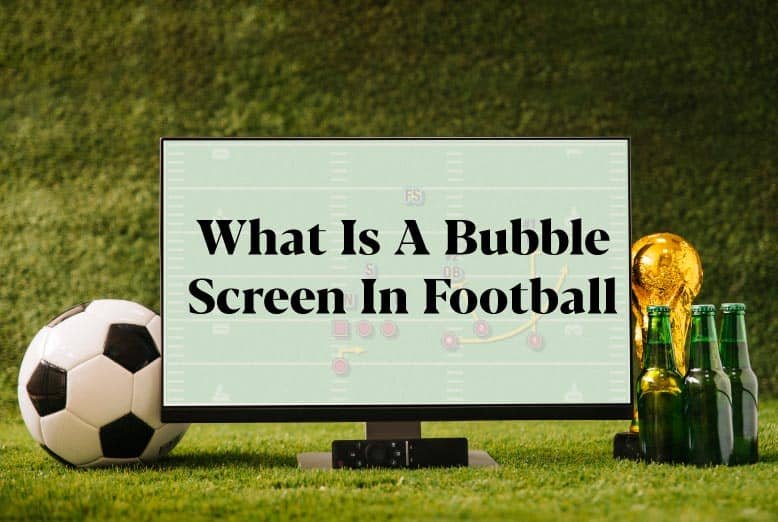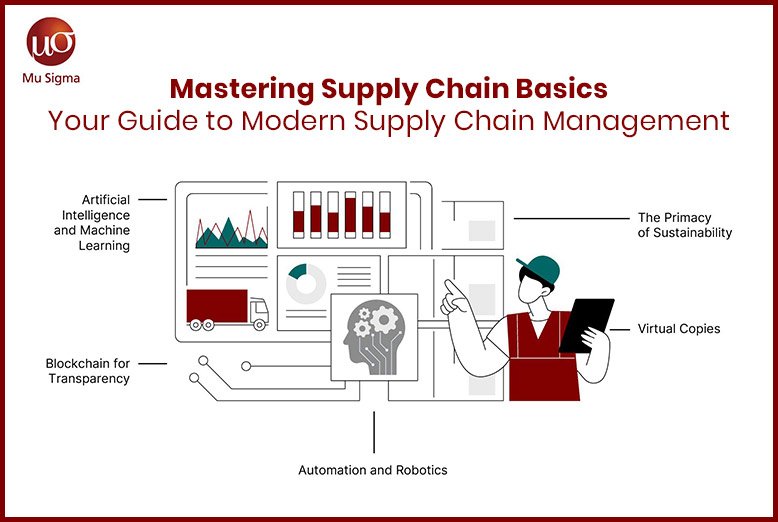Football is a game of strategy and innovation, where every play can be a game-changer. If you’ve ever watched a football game and wondered about the term ‘bubble screen,’ you’re in the right place. What Is The Bubble Screen RouteGet ready to explore one of the sport’s most intriguing and versatile offensive maneuvers that can turn a simple pass into a touchdown-worthy spectacle!
Why Do They Call It A Bubble Screen?
A bubble screen gets its name from the way that the intended receiver “bubbles” back and away from the ball and the quarterback. When running to the sideline in a bubble play, the receiver may take a slightly backward path, only coming back to the line of scrimmage as they approach the sideline to make the catch.
In the world of football, terminology often carries hidden stories and intriguing histories. One such term that has piqued the curiosity of football enthusiasts is the “bubble screen.” Why is it called a bubble screen, and what is the story behind this peculiar name? Let’s delve into the origins and evolution of the bubble screen in football
The Bubble Screen: A Quick Primer
Before we uncover the name’s origin, let’s briefly understand what a bubble screen is in football. A bubble screen is an offensive play designed to exploit the space on the perimeter of the field, typically near the sideline. It’s a type of screen pass where the quarterback quickly delivers the ball to a receiver positioned behind the line of scrimmage, and the offensive line forms a “screen” or wall of blockers to pave the way for the receiver. The receiver then attempts to gain yardage by following the wall of blockers and making use of their agility and speed.
The Bubble Screen’s Early Days
The bubble screen has been a part of football strategy for many decades, but it wasn’t always known by this distinctive name. In its infancy, the play was often referred to as a “swing pass” or a “wide receiver screen.” These terms accurately described the play’s mechanics, with the receiver swinging out to the sideline to receive the pass and blockers forming a screen.
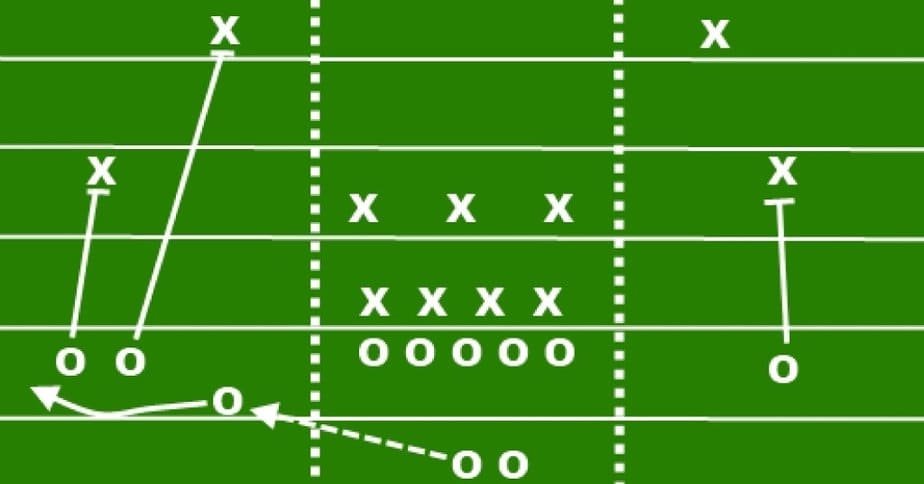
What Is The Bubble Screen Route?
The traditional bubble route involves a drop step by the receiver. He keeps his shoulders square and gets depth for 3 to 4 steps in a kind of crossover run. Once the receiver gets depth, with shoulders square, he attacks the line of scrimmage. In the dynamic world of football strategy, the bubble screen route stands out as a versatile and effective offensive maneuver. If you’re an avid football fan or a curious newcomer to the sport, understanding the mechanics and significance of the bubble screen route https://bubbleslidess.com can give you deeper insights into the game’s tactics. In this guide, we’ll break down the bubble screen route, its execution, and its impact on the field, while drawing insights from resources like Bubbleslidess to enhance your understanding of football strategies.
The Bubble Screen Route: A Snapshot
The bubble screen route is a fundamental pass pattern used by offensive teams to exploit defensive vulnerabilities on the perimeter of the field. This play involves quick, precise execution and relies on the skills of both the quarterback and the receiver. Let’s explore how the bubble screen route unfolds:
1. Initial Setup:
The offense lines up, often in a formation with three receivers to one side of the field. The outermost receiver, known as the “primary receiver,” is the target of the bubble screen route.
2. Pre-Snap Read:
The quarterback surveys the defensive formation before the snap. The success of the bubble screen route depends on the positioning of the defenders and the amount of space available on the perimeter.
3. Quick Pass:
As the ball is snapped, the quarterback makes a rapid lateral pass to the primary receiver. This pass is quick and efficient, designed to get the ball into the receiver’s hands as soon as possible.
What Are The Different Screens In Football?
A screen to a running back to either the strong or short side of the field in the flats is often just called a screen. Screens to wide receivers come in four forms: the bubble screen, middle screen, slot screen, and slip screen.In the complex world of football strategy, defensive plays are as crucial as offensive ones. Coaches and players rely on a range of defensive screens to counter the opponent’s moves, disrupt passing lanes, and protect the goal line. Whether you’re a die-hard football enthusiast or just starting to explore the sport, understanding the different screens in football can shed light on the game’s intricacies. In this guide, we’ll dissect the various screens used by football teams and their strategic roles on the field.
The Defensive Arsenal: Football Screens Explained
Football screens are tactical maneuvers employed by the defensive team to thwart offensive plays. These screens come in different forms, each designed to address specific situations and neutralize the opponent’s attack. Let’s dive into the key defensive screens in football:
1. Man-to-Man Coverage:
In man-to-man coverage, each defensive player is responsible for marking an offensive player. This tight, one-on-one coverage aims to minimize the receiver’s ability to catch passes, create separation, or make plays. Man-to-man coverage is often used when the defense wants to apply pressure on individual receivers or disrupt precise routes.
2. Zone Coverage:
Zone coverage divides the field into areas or “zones,” with each defender responsible for a specific zone. This strategy is effective in preventing long passes and intercepting throws to specific areas. Zone coverage allows defenders to react to the quarterback’s decisions and exploit passing lanes.
3. Press Coverage:
Press coverage is a type of man-to-man coverage where defenders engage receivers at the line of scrimmage. The goal is to disrupt the receiver’s route and timing, making it challenging for them to get open. Press coverage is particularly effective when the defense wants to disrupt short and quick passes.
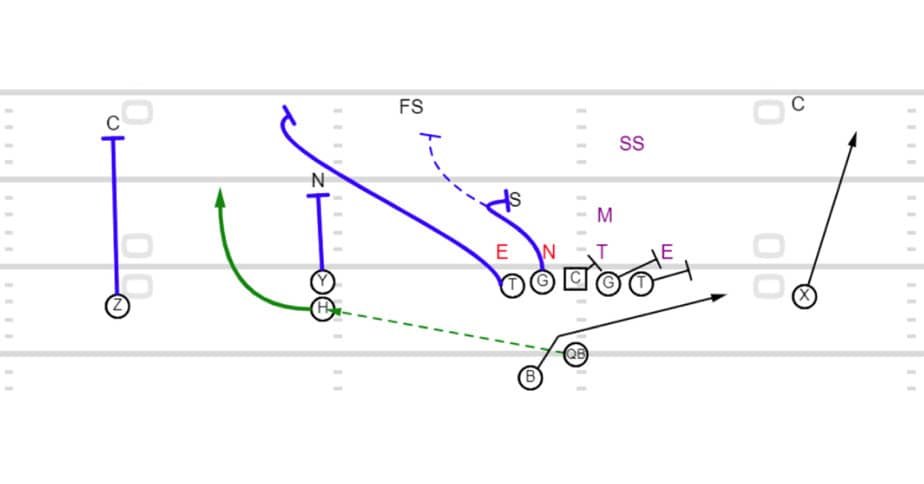
What Is The Difference Between A Screen And A Bubble Screen?
Unlike a traditional screen pass, the design of a bubble screen is to spread the defense out and take advantage of matching up blockers to outside linebackers, cornerbacks, and safeties. These will be the initial points of blocking contact, instead of over the middle of the field.In the intricate world of football tactics, the terminologies can sometimes be a maze, especially for newcomers to the sport. Two terms that often raise questions are “screen” and “bubble screen.” Are they the same, or is there a notable difference? In this guide, we’ll unravel the distinctions between a screen and a bubble screen in football, shedding light on their unique roles and execution on the field.
Screen Pass: The Basics
Let’s start with the fundamental concept of a screen pass. A screen pass is a type of play in football where the quarterback intentionally throws a short pass to a designated receiver behind the line of scrimmage. The primary goal of a screen pass is to create an opportunity for the receiver to gain substantial yardage after the catch. Here’s a breakdown of the key elements of a screen pass:
1. Offensive Line Setup:
The offensive line initially sets up to allow the defensive rushers, typically defensive linemen or linebackers, to penetrate into the backfield.
2. Blocking Formation:
Once the rushers commit to pressuring the quarterback, the offensive linemen release their blocking assignments and move downfield to block for the receiver. This creates a protective wall of blockers.
3. Receiver’s Role:
The receiver, positioned behind the line of scrimmage, receives the short pass from the quarterback.
What Are Stadium Screens Called?
A jumbotron, sometimes referred to as jumbovision, is a video display using large-screen television technology (video wall).When you step into a modern sports stadium, you’re not just entering a venue for the game; you’re immersing yourself in a sensory experience. One of the key components that elevate this experience to new heights is the colossal display screens that adorn the stadium. But have you ever wondered, “What are stadium screens called?” In this guide, we’ll unveil the terminology behind these technological marvels and explore their role in enhancing the fan’s game-day adventure.
The Heartbeat of Stadiums: Jumbotron Screens
The term you’re likely most familiar with when it comes to stadium screens is “Jumbotron.” The Jumbotron is a trademarked brand name for large-scale video display screens developed by Sony. Over time, it has become synonymous with massive screens in stadiums worldwide. Here’s what sets Jumbotron screens apart:
1. Colossal Size:
Jumbotrons are renowned for their colossal size, often stretching across multiple stories or sections of the stadium. These mammoth screens offer spectators an unmissable view of the action, replays, and captivating graphics
2. Immersive Visuals:
Jumbotron screens are designed to provide high-definition, crystal-clear visuals, ensuring that fans don’t miss a single detail of the game. They contribute significantly to the immersive atmosphere of live sports events.
What Is A Bubble Screen In Football, And How Does It Work?
In the thrilling realm of football, plays and strategies are the gears that keep the game in motion. One play that often catches the attention of fans and pundits alike is the “bubble screen.” But what exactly is a bubble screen in football, and how does it work? In this guide, we’ll break down the mechanics of this strategic maneuver and shed light on its role in the game.
The Bubble Screen Unveiled
A bubble screen is a tactical offensive play in football that falls under the category of screen passes. This play is designed to quickly deliver the ball from the quarterback to a receiver stationed behind the line of scrimmage. The primary objective of a bubble screen is to create an opportunity for the receiver to gain significant yardage after catching the ball. Let’s dissect the key elements of a bubble screen and understand how it unfolds:
1. Setup and Formation:
The offense lines up with the quarterback in the shotgun formation, often with three receivers on one side of the field. The outermost receiver, known as the “primary receiver,” is the key target for the bubble screen.
2. The Snap and Quick Pass
As the ball is snapped, the quarterback immediately receives it and swiftly delivers a lateral pass to the primary receiver, who is positioned behind the line of scrimmage. This pass is typically short and quick, designed to reach the receiver as rapidly as possible.
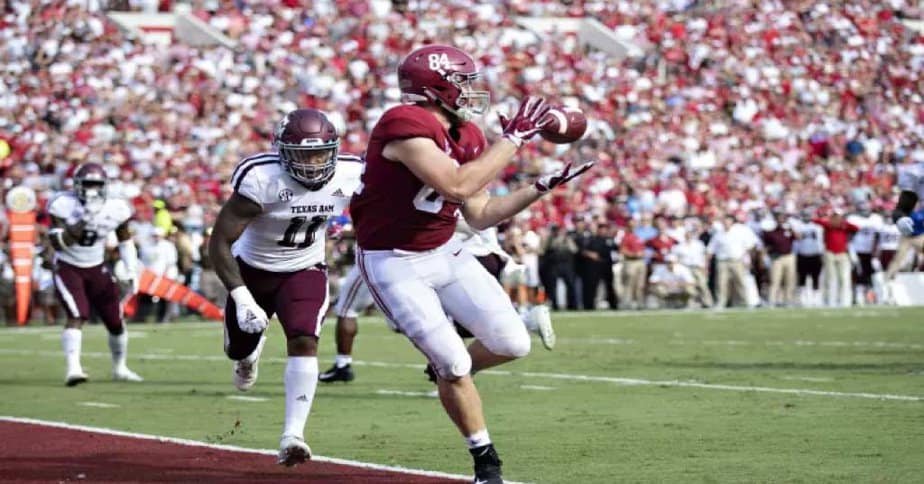
What Is The Purpose Of A Bubble Screen In Football?
In the intricate game of football, each play serves a specific purpose within a team’s strategy. One play that has gained prominence in recent years is the “bubble screen.” But what exactly is the purpose of a bubble screen in football, and how does it fit into the larger tactical puzzle? In this guide, we’ll explore the strategic intent behind the bubble screen and why it has become a valuable tool in a football team’s arsenal.
Defining the Bubble Screen’s Purpose
A bubble screen is an offensive play designed to achieve several strategic objectives, making it a versatile and essential part of modern football tactics. Here’s a breakdown of the primary purposes and benefits of a bubble screen:
1. Quick Gain of Yards:
One of the central purposes of a bubble screen is to gain yards quickly and efficiently. By delivering the ball to the receiver behind the line of scrimmage and utilizing a blocking formation, the offense aims to create a situation where the receiver can catch the ball and immediately advance downfield. This quick gain of yards is valuable, especially in situations where the offense needs to move the ball down the field rapidly.
2. Neutralizing Aggressive Pass Rush:
In football, the defense often deploys aggressive pass rushers to pressure the quarterback and disrupt passing plays. The bubble screen serves as a strategic countermeasure against such aggressive defenses. By getting the ball into the receiver’s hands swiftly, the offense can neutralize the impact of a fierce pass rush. This is particularly valuable when facing a defense known for its potent pass rushers.
3. Exploiting Open Space:
The bubble screen is designed to exploit open space on the perimeter of the field. The play’s success relies on the receiver’s ability to read the blocking formation, identify open lanes, and make quick decisions. When executed effectively, the receiver can use their speed and agility to navigate through the defense and capitalize on the available space.
Conclusion
In conclusion, the bubble screen in football is not just a play; it’s a strategic weapon that can turn the tide of a game in an instant. This simple yet effective play has revolutionized the way teams move the ball and created some of the most electrifying moments in football history. So, whether you’re a die-hard fan or just someone looking to appreciate the intricacies of the game, understanding the bubble screen is essential. It’s a play that exemplifies the beauty of football – where speed, precision, and teamwork come together to create moments that will be talked about for generations to come.
Frequently Asked Questions (FAQs)
Q1. What is a bubble screen in football?
A bubble screen is a passing play in football where the quarterback quickly throws the ball to a receiver positioned behind the line of scrimmage, usually near the sideline, who then relies on blockers to gain yards.
Q2. How does a bubble screen work?
The quarterback throws a short, lateral pass to the receiver behind the line of scrimmage. The receiver catches the ball and looks to advance while being supported by blocking from teammates, typically wide receivers and offensive linemen.
Q3. Why is the bubble screen used in football?
The bubble screen is used to create opportunities for yards after the catch (YAC) and can be effective against defenses that play off the line of scrimmage. It’s a way to get the ball to playmakers in space.
Q4. What are the key elements of a successful bubble screen?
Timing between the quarterback and receiver, precise blocking, and the receiver’s ability to make quick decisions are crucial for a successful bubble screen.
Q5. Is the bubble screen a high-risk play?
The bubble screen is considered a low-risk play because it’s a short pass behind the line of scrimmage. However, it can be ineffective if not executed properly.
ALOS READ: 10 Largest cricket stadiums in the world that will Awestruck every Cricket Fan

